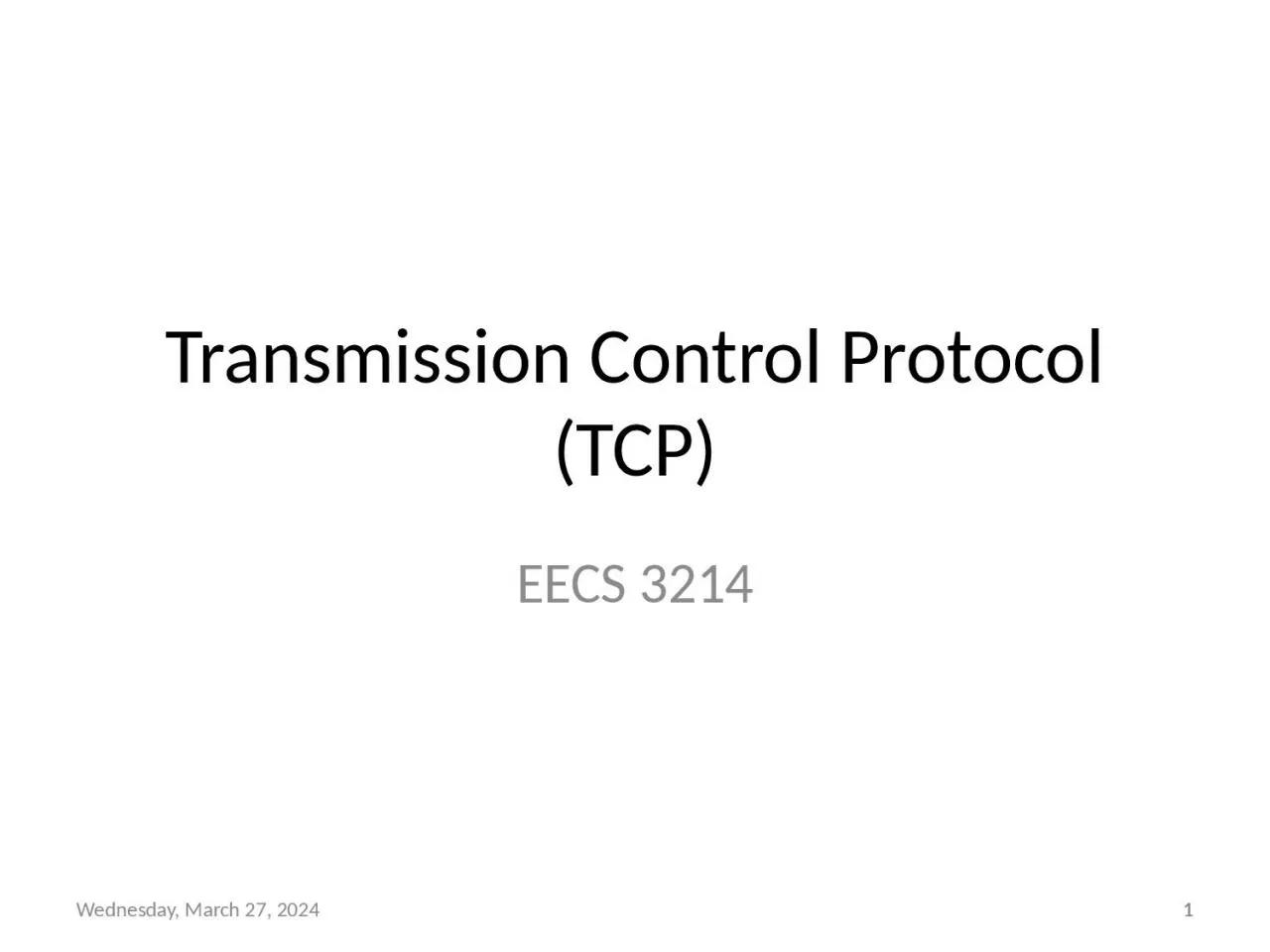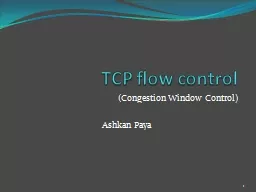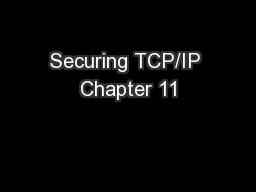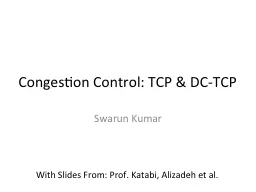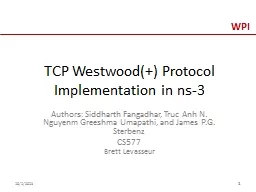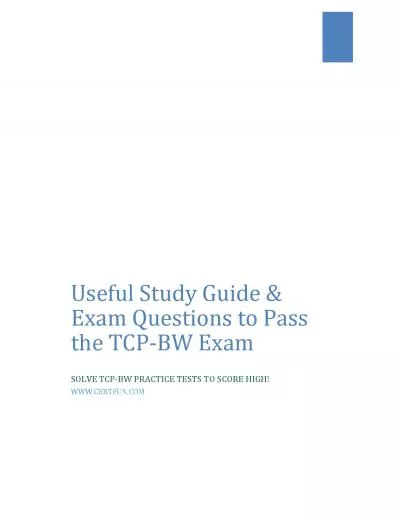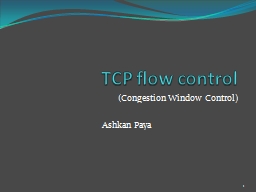PPT-1 Transmission Control Protocol (TCP)
Author : fauna | Published Date : 2023-09-08
EECS 3214 1 13 February 2018 2 TCP Services Transmission Control Protocol RFC 793 connection oriented reliable communication over reliable and unreliable internetworks
Presentation Embed Code
Download Presentation
Download Presentation The PPT/PDF document "1 Transmission Control Protocol (TCP)" is the property of its rightful owner. Permission is granted to download and print the materials on this website for personal, non-commercial use only, and to display it on your personal computer provided you do not modify the materials and that you retain all copyright notices contained in the materials. By downloading content from our website, you accept the terms of this agreement.
1 Transmission Control Protocol (TCP): Transcript
Download Rules Of Document
"1 Transmission Control Protocol (TCP)"The content belongs to its owner. You may download and print it for personal use, without modification, and keep all copyright notices. By downloading, you agree to these terms.
Related Documents

